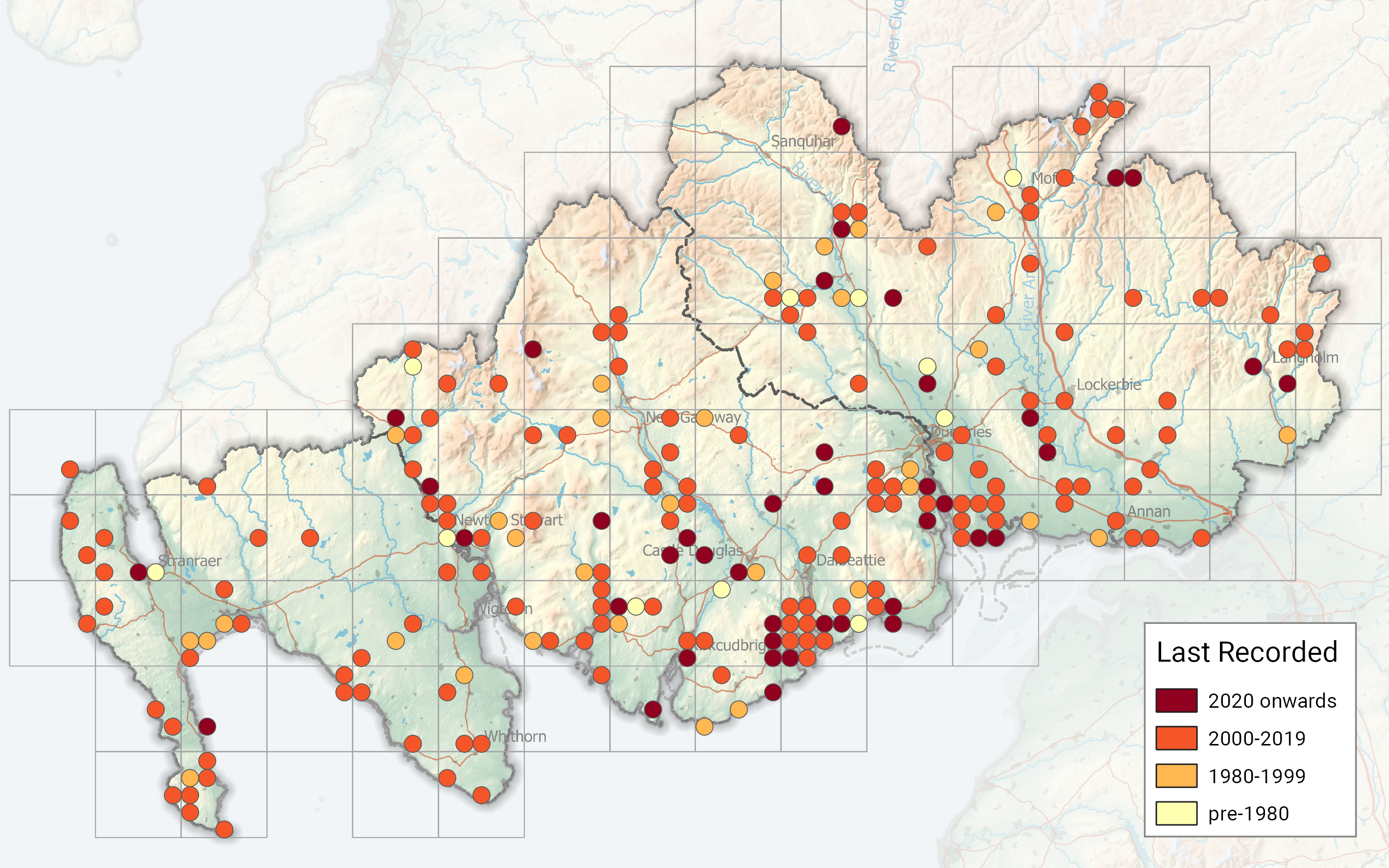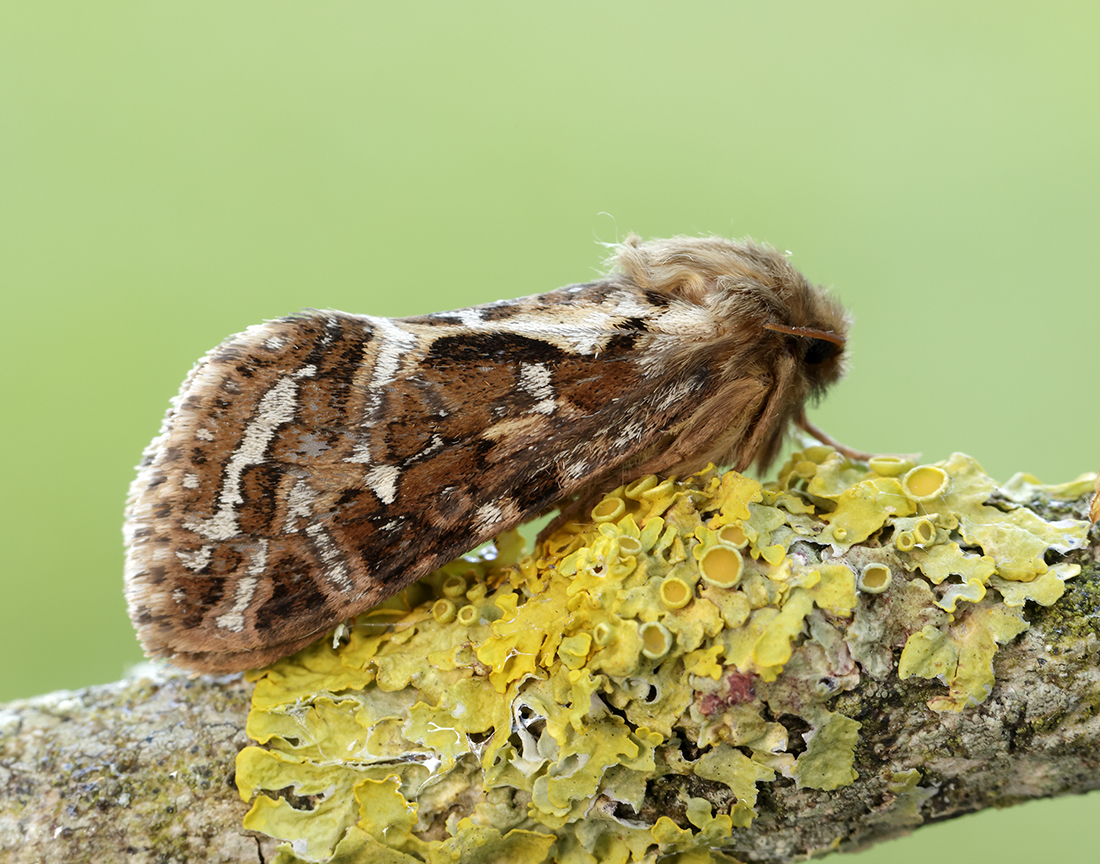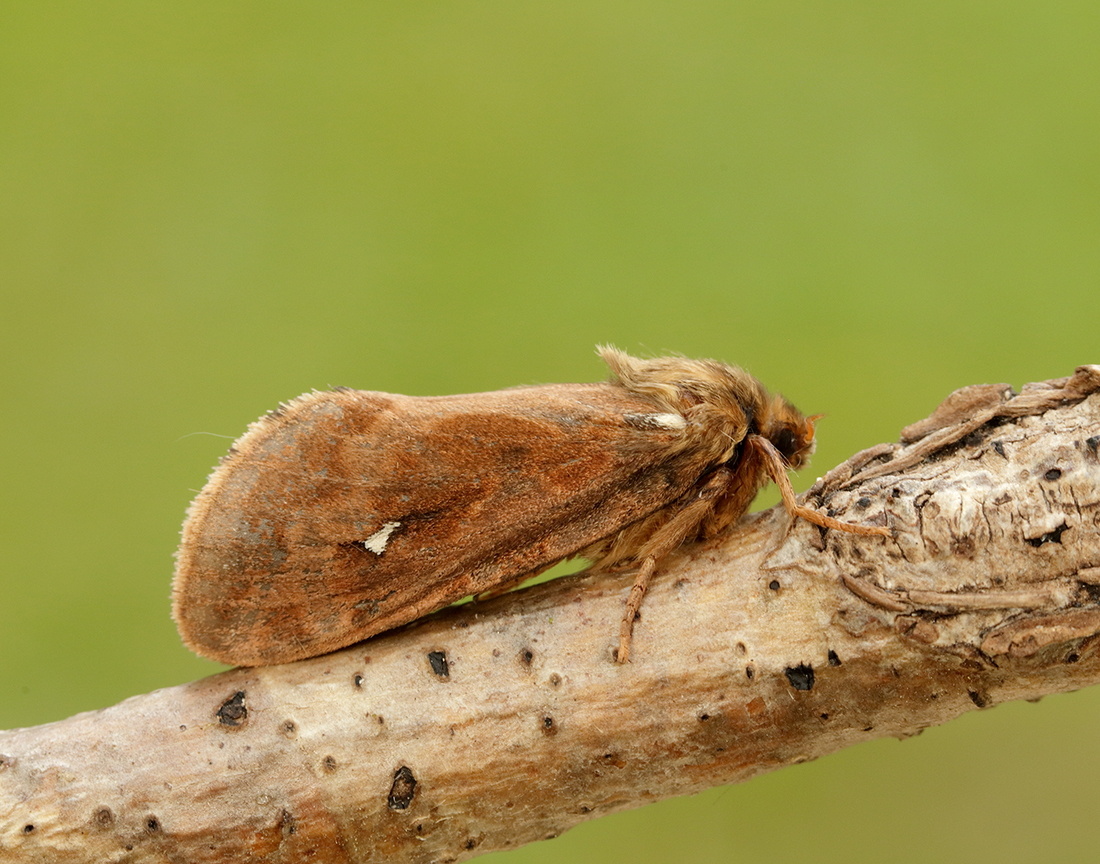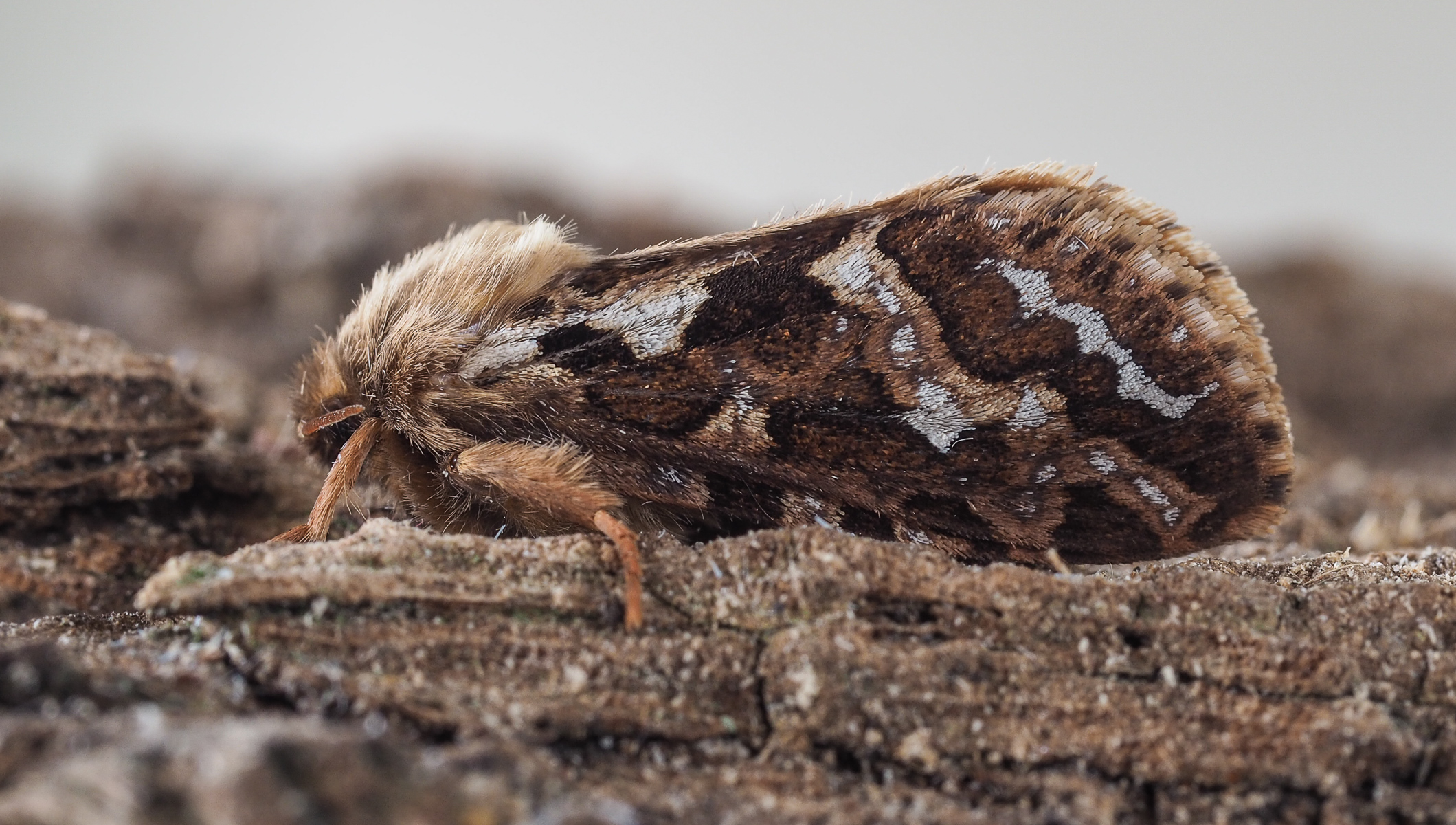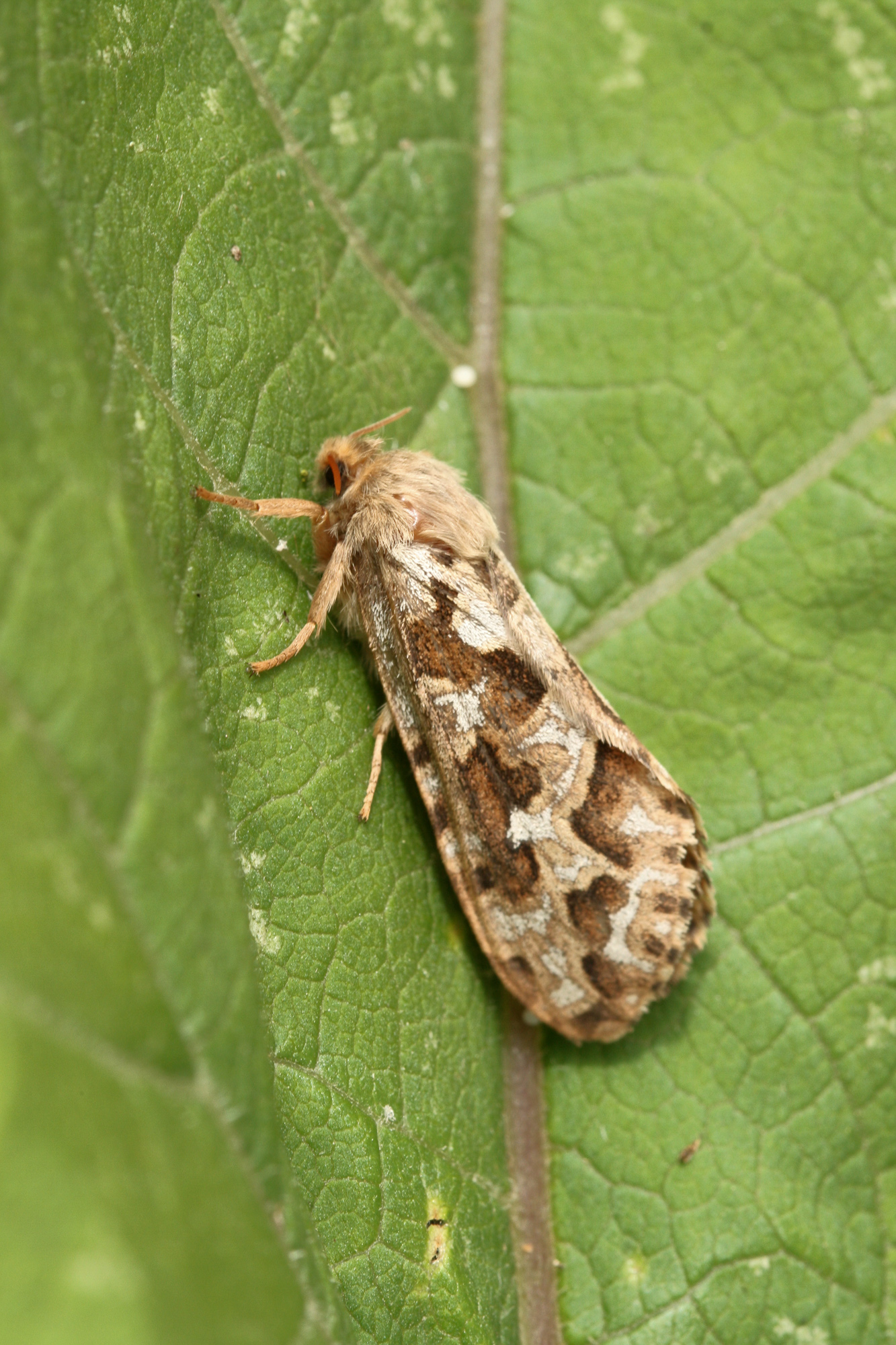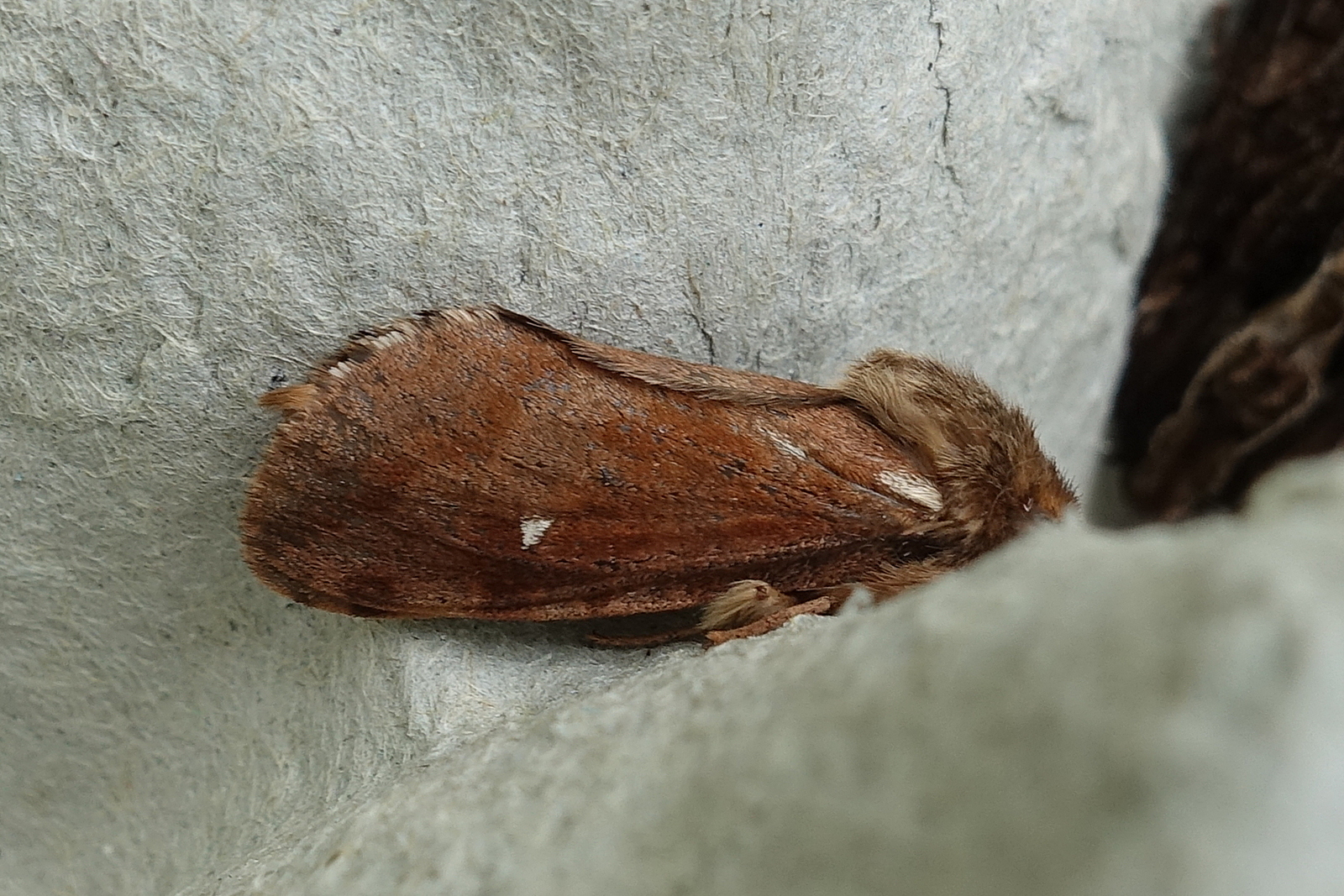Identification
The distinctive map-like markings on the forewing are very characteristic. The Map-winged Swift has no proboscis, so it is never found at sugar or flowers. Records of both sexes and forms required.
Life cycle
One generation. Overwinters as a larva, but probably taking two seasons for development.
Larval foodplants
Larvae feed on the roots of Bracken, as well as other herbaceous plants.
Habitat
Wide range of habitats including rough grassland, open woodland and gardens.
History 1860-2010
Lennon (1863) had stated it as uncommon, but had found it on Tinwald Downs (VC72). W. Douglas Robinson (1870-71) had found it abundant in June on Almorness (VC73). Francis Buchanan White of Perth (1895) in his ‘Lepidoptera’ recorded in Colvend parish (VC73) listed Hepialus valleda and var. gallicus. Gordon (1913) had stated it to be “common on roadsides, and often abundant among bracken at or just after sunset, June and July.” In 1906 on 6th and 8th June the form gallicus Lederer was taken along with the nominate type.
MOGBI (1983) had only one 10km square post 1960 record and that was for Wigtownshire. Pelham-Clinton (1983) trapped it at Barony College (VC72) during the Scottish Entomologists’ visit in July 1982. There are just over 100 records from the Rothamsted data during 1975-93.
With records nearing 500, equally for all three VCs, it is the most frequent species of swift moth, both forms occurring across the region within the same localities.
The form gallicus Lederer, 1853 with over twenty records had been recorded from all three vice-counties.

